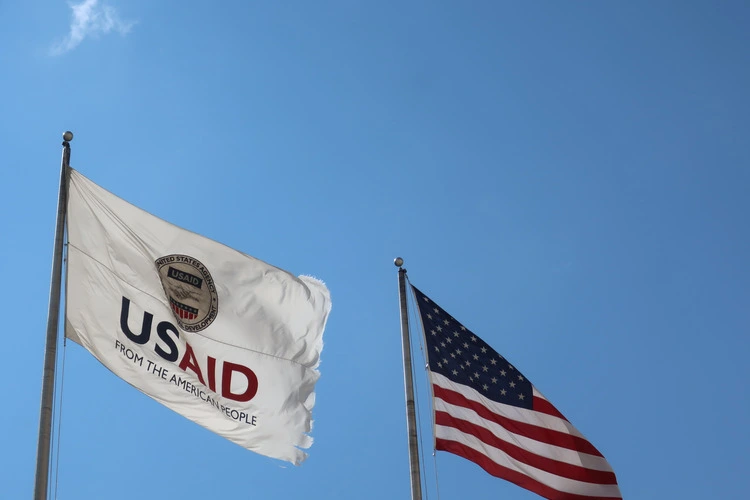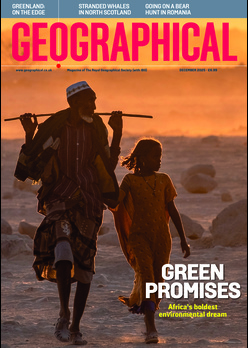
We look at some of USAID’s most significant accomplishments & projects across the world, from major food assistance to eradicating polio…
By
In the past few weeks, most USAID funding has ground to a halt amid cuts by the Trump administration. With many projects now scaling back – or even being forced to terminate their operations – the once certain promise of US foreign aid investment faces a precarious future.
Enjoying the article? Check out our related reads:
In 2023 alone, USAID provided assistance to 130 countries, disbursing $71.9 billion in foreign aid – the majority of which was spent on economic development (27 per cent), followed by health (22.3 per cent) and humanitarian assistance (21.7 per cent) to other nations.
However, these numbers only begin to paint the picture of the vast impact that USAID has had in all corners of the globe. On the ground, countless projects have changed the lives of those supported by them and have helped lead nations onto a path for safer, healthier and more educated societies.
Here we reveal some of the major successes and accomplishments that USAID has had in previous years, using information available from the 2012-2017, and 2017-2021 USAID website archives.
Emergency responses
Between 2017 and 2020, USAID responded to more than 240 natural disasters and crises around the world – from famines in the Republic of South Sudan to conflict in Afghanistan, Yemen and the Lake Chad basin.
From 2012 to 2017, it supported more than five million survivors of gender-based violence through services including medical care, counselling and legal help. Such care is vital considering that one in three women will experience gender-based violence in their lifetime.
And in 2016 alone, the organisation provided food assistance to more than 53 million people across 47 countries.
Global health
In recent times, one of the major steps USAID has taken in protecting public health around the world is its involvement in Gavi, an international organisation created to improve vaccine access to children. USAID pledged $1.16 billion over 2020-2023 to support the organisation’s infrastructure, ensuring that families in low- and middle-income countries have access to vaccines including those that prevent Ebola, cholera, yellow fever and meningitis.
As well as tackling these diseases, USAID achieved a milestone in 2020 in Africa through the eradication of wild poliovirus. Before efforts to curb the spread of polio, estimates suggest around 75,000 children on the continent were paralysed each year after contracting it.
The organisation has also made significant steps in combating malaria – from 2007 to 2017, USAID saved 6 million lives through the President’s Malaria Initiative. And between 2017 and 2020, it gave out enough mosquito nets to protect 320 million people; distributed preventative medicine to protect 20 million pregnant women and 14 million children and sprayed homes with insecticides to protect 77 million individuals.
AIDS is another disease that USAID have focused upon in their global health remit; in 2015 alone, the organisation helped 9.5 million people receive life-saving AIDS treatments in collaboration with partners through the President’s Emergency Plan for AIDS Relief (PEPFAR).
Education
Additionally, USAID has been heavily involved in securing education for some of the most vulnerable communities in the world, working in more than 50 developing countries to achieve this goal.
From 2011 to 2015, it supported 52 million children and youth through a range of projects – from strengthening educational programmes in 45 countries, to providing almost 150 million textbooks and learning materials to teachers and students.
In South Sudan – the nation with the world’s highest proportion of out-of-school children (nearly 72 of primary-school-aged children missing out on education) – USAID enrolled more than 514,000 children and adolescents into schools that provide literacy and numeracy support among other services.
The agency also provided vital education tools during the school closures of the COVID-19 pandemic, supporting the 1.68 billion children and youth out of school with resources such as curriculums for distance learning.
Environment
A range of projects have been undertaken by USAID to better the planet’s environment. Previously, it delivered energy programmes in 20 countries, contributing to the eventual installation of 34,000 megawatts of renewable energy capacity – enough energy to power 3.4 million UK homes for an entire year.
It also mobilised more than $40 billion in private investment for generating clean energy, and worked to combat ocean plastic pollution through the launching of a $48 million ‘Clean Cities, Blue Ocean’ project.
Governance
Numerous examples exist of the work USAID has done to ensure democracy across the world. In Burma’s November 2015 national elections, the organisation supported a democratic transition that led to the country’s first civilian-led government since 1962.
It has also worked with the Government of Senegal to improve transparency and accountability between these higher authorities and the public.In 2018, some of the activities carried out to achieve this goal included the organisation of more than 1,000 peace-building events attended by 13,000 people and a further 90 events which promoted and strengthened civic participation by women.




